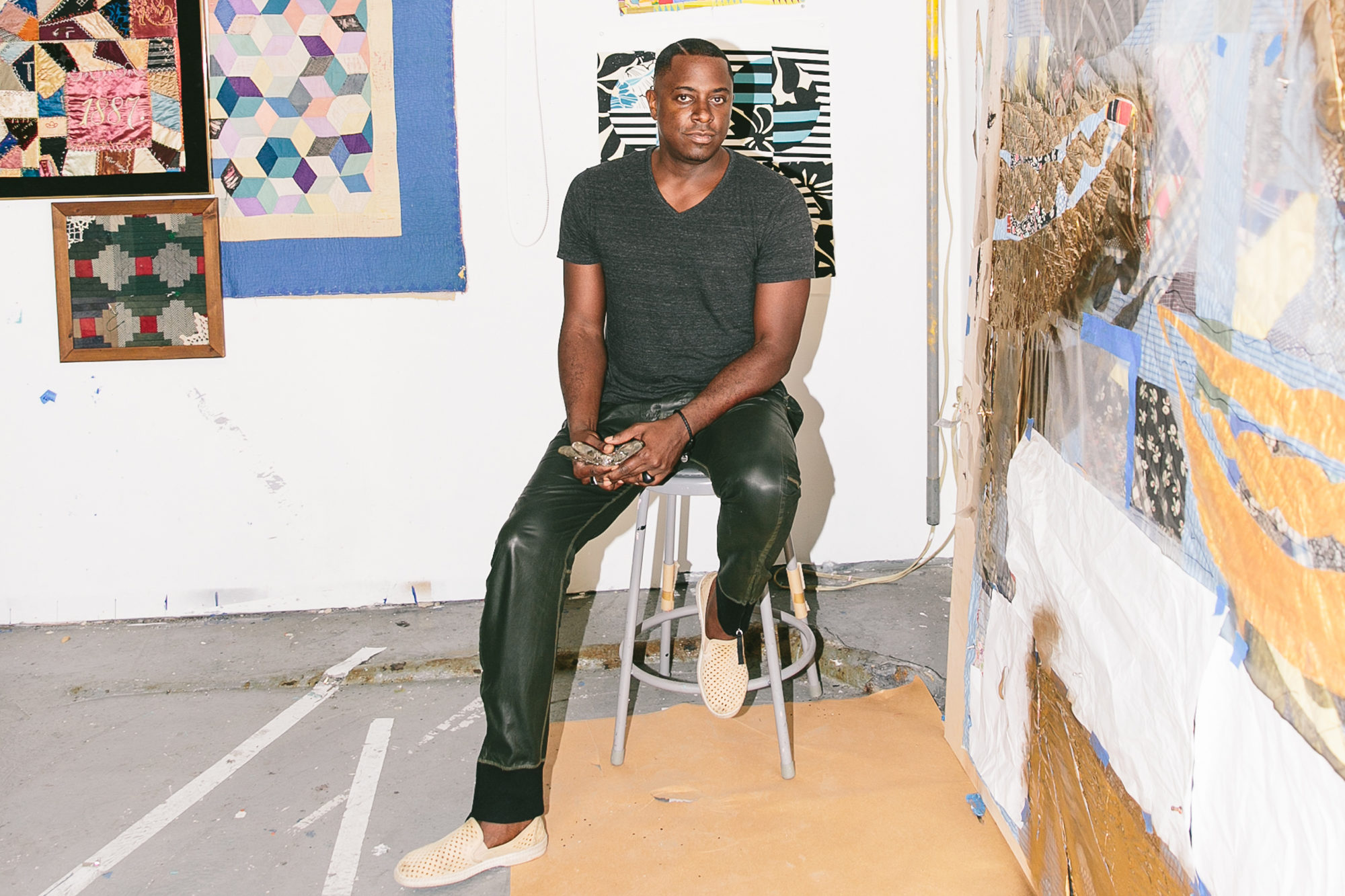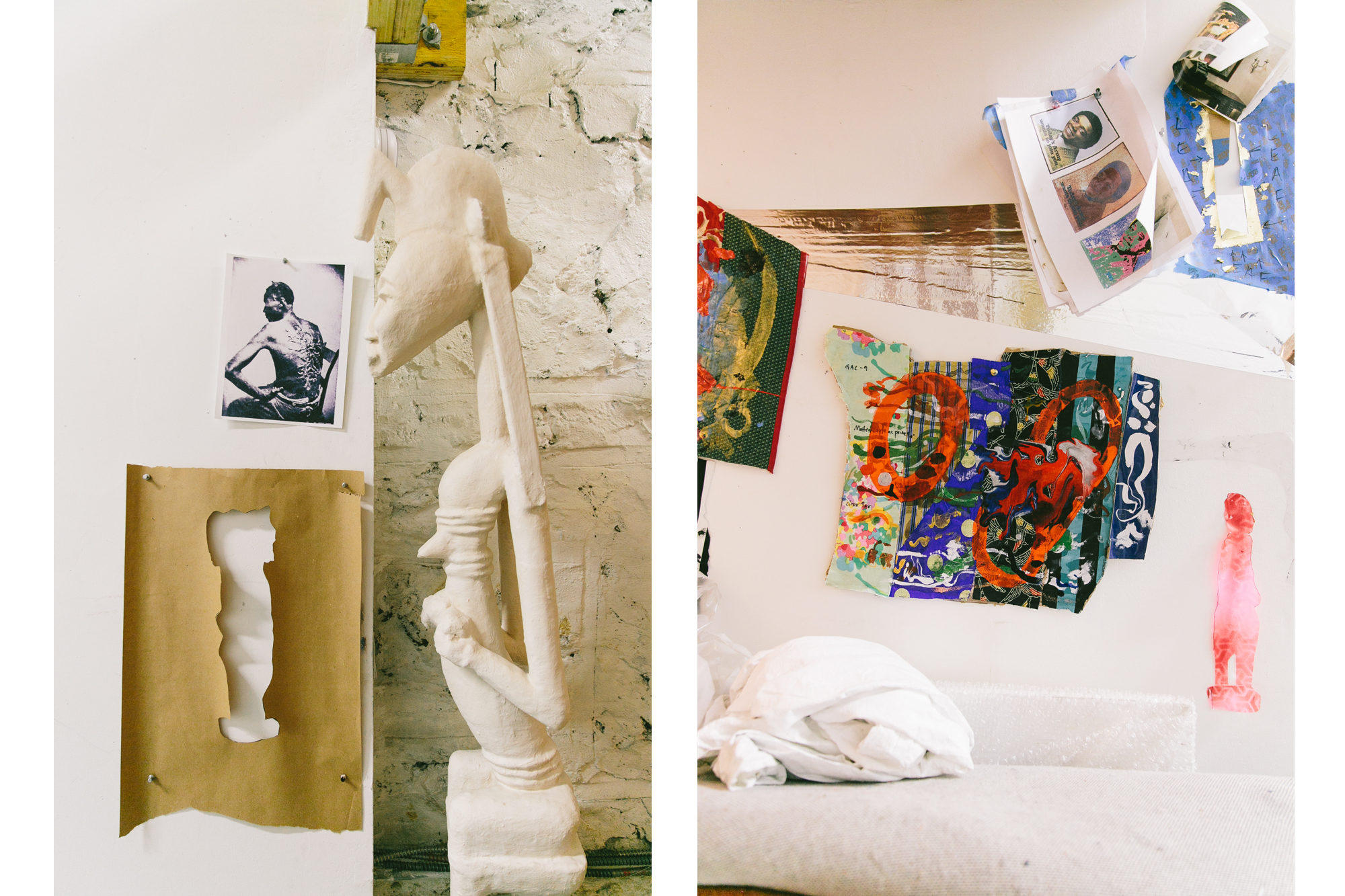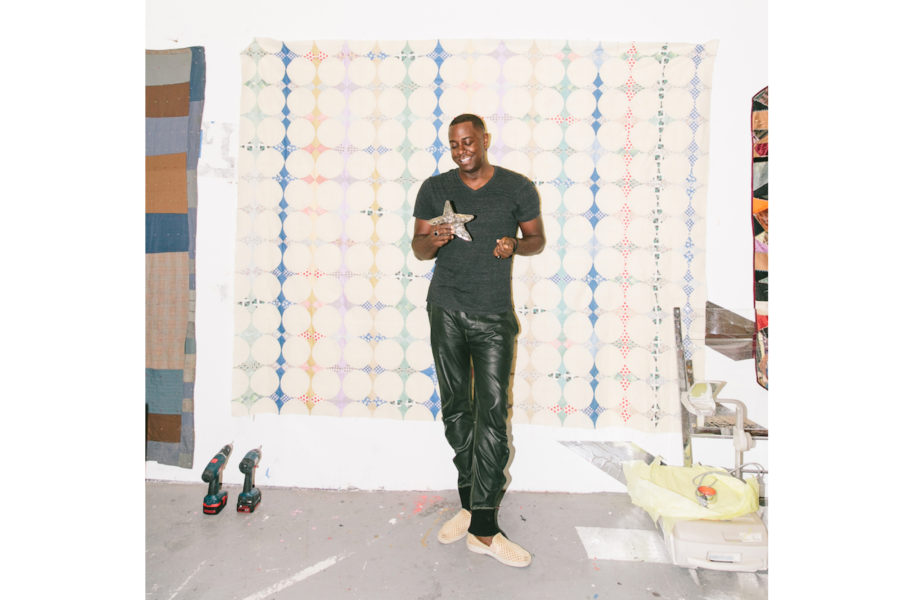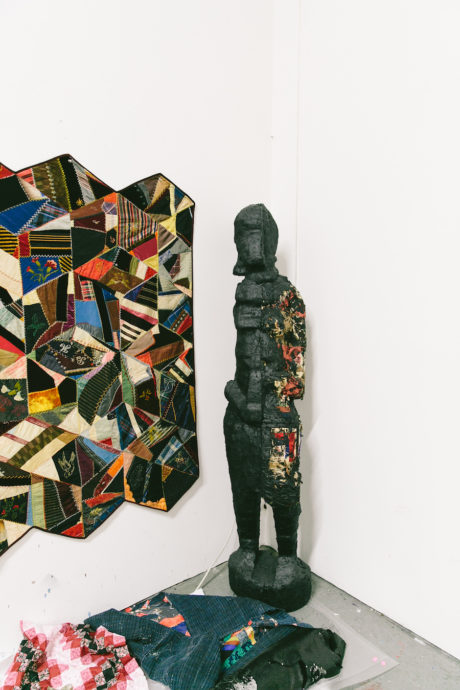For Sanford Biggers, history is not a thing of the past, but an ongoing, unbroken current. It is always present in his work, which confronts and contemplates America’s yesterday—its folk heritage, its legacy of slavery, its treatment of the black body. In his visually and conceptually rich paintings, sculpture, and performances, the past is both a subject for reexamination and a found object. “We revisit history in order to add a different context and meaning to it,” he says. “I often think of history itself as a material—a malleable material.”
This practice has earned the 47-year-old, New York–based artist solo shows at Mass MoCA and the Brooklyn Museum and accolades including this year’s Rome Prize in Visual Arts. His exhibition “Selah” opens at Marianne Boesky Gallery in Manhattan this month and runs through October 21. It includes new work Biggers made in his Harlem studio, gathering fragments of fabric to be stacked, sewn, painted over, framed, and painted over again. “As interested as I am in found objects,” he says, “it’s also about the transformation of the object, doing another process or action that acknowledges its found nature but also puts something new into it.”
The convergence of cultures and contexts that Biggers’s layering creates has its roots in his life. He remembers, while growing up in Los Angeles, fabric shopping with his mother in a neighborhood populated with German and Japanese immigrants. Outside of his advanced placement art classes, hip-hop culture offered him artistic outlets in tagging, breakdancing, and deejaying. Then in 1992, he spent three years teaching English in Japan, steeping himself in Buddhism.
In 2007, he unveiled “Lotus,” a seven-foot-wide glass etching of a lotus flower, a Buddhist symbol of purity, its petals contrastingly detailed with diagrams of slave ships. It’s a work Biggers considers “conceptually autobiographical,” a meditation on two wildly disparate cultures that have directly and indirectly shaped him.











